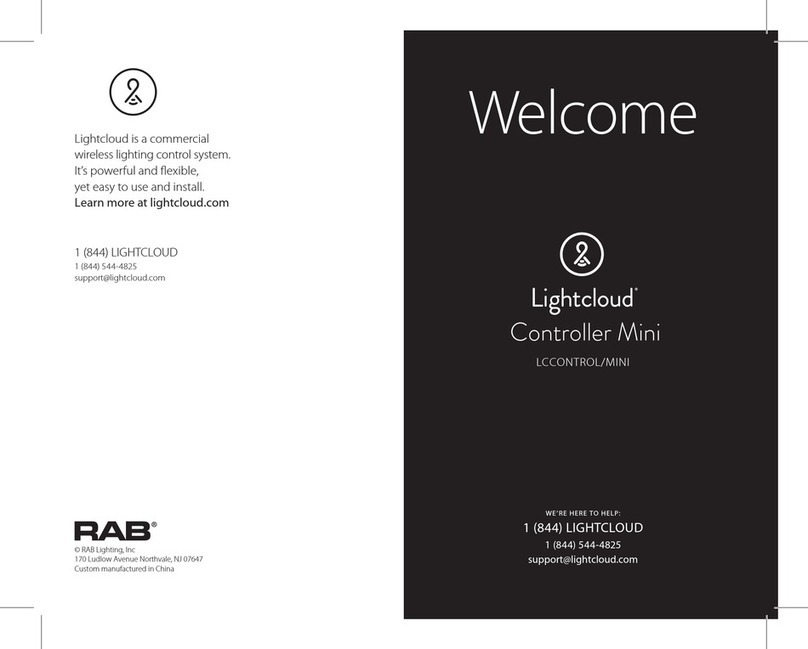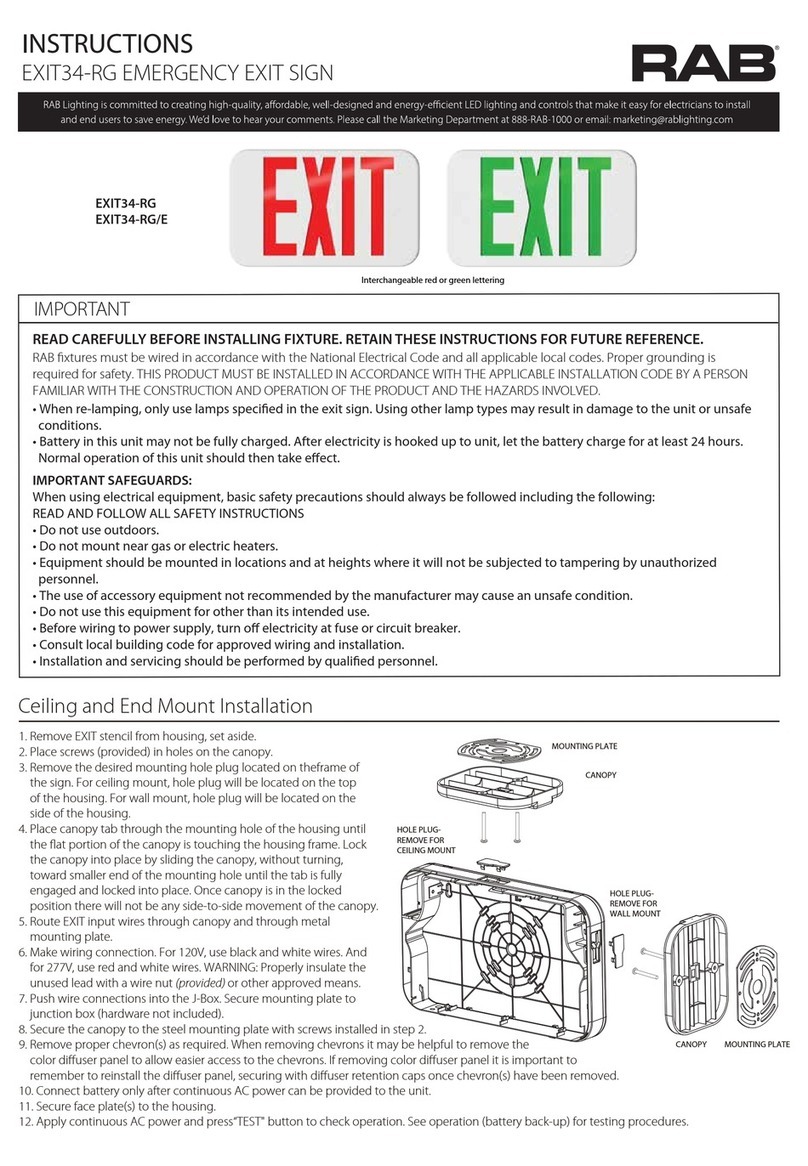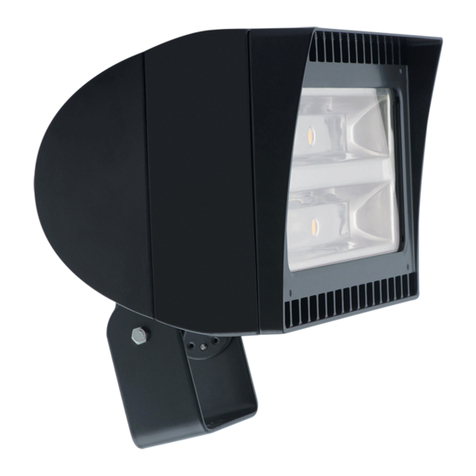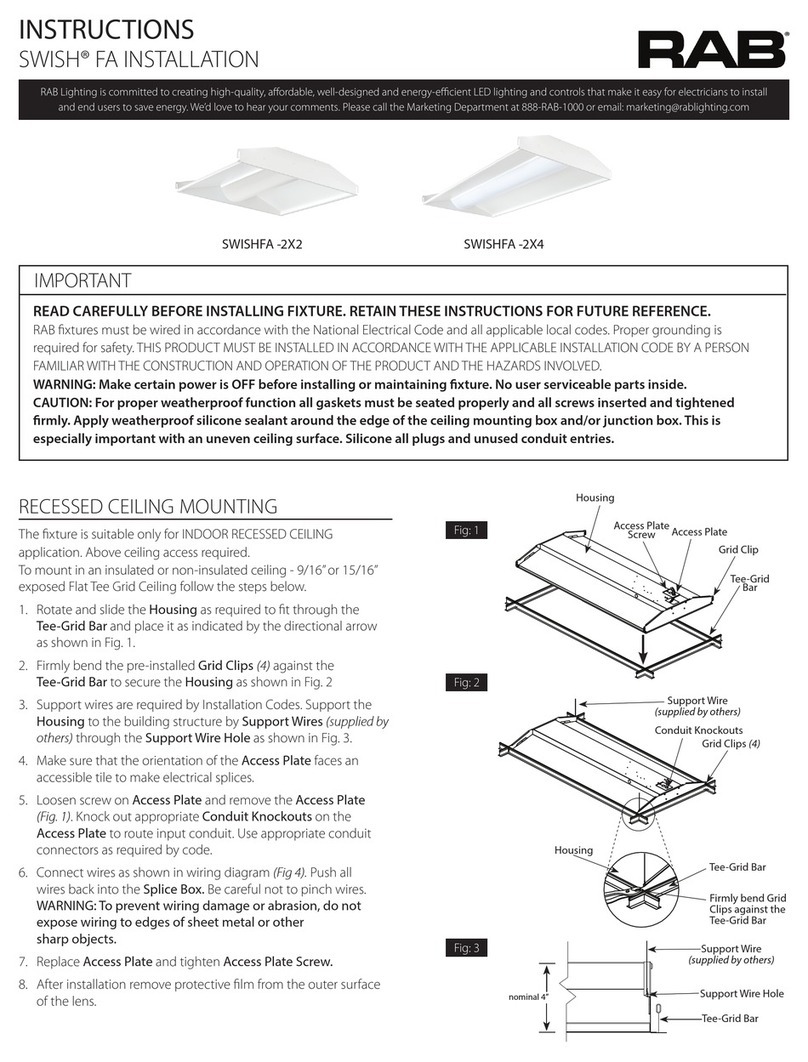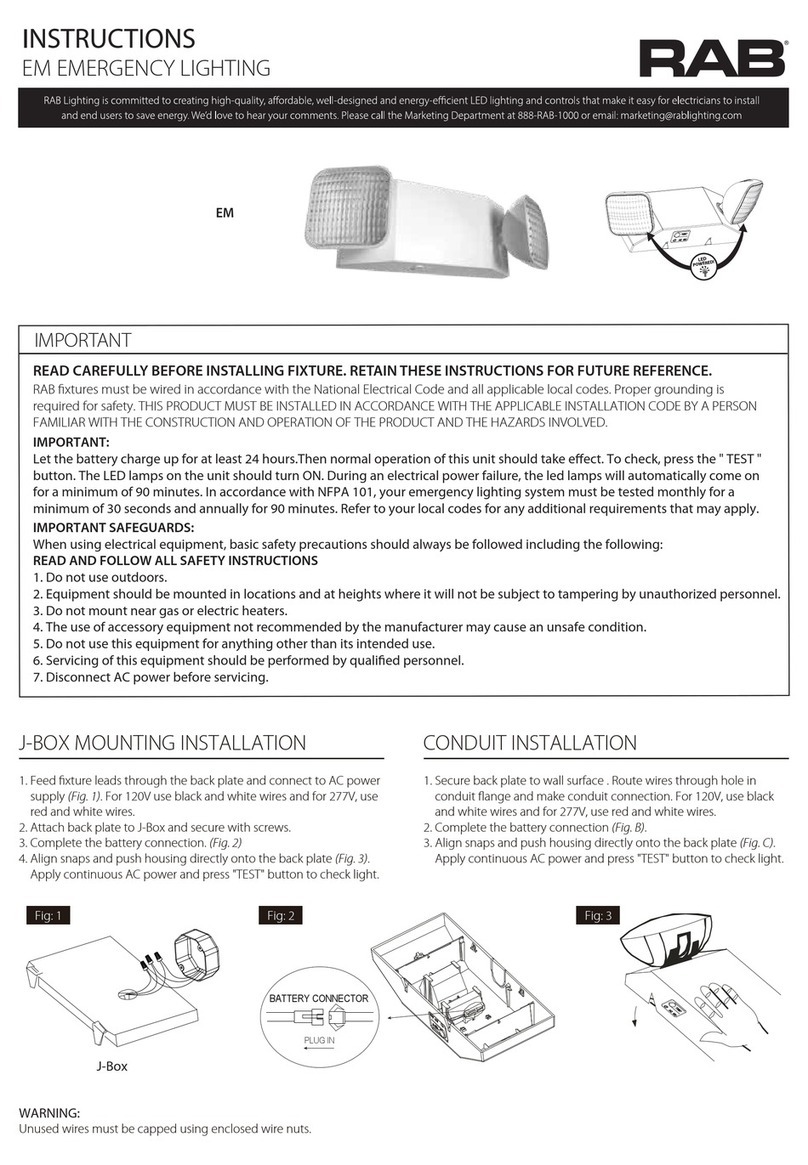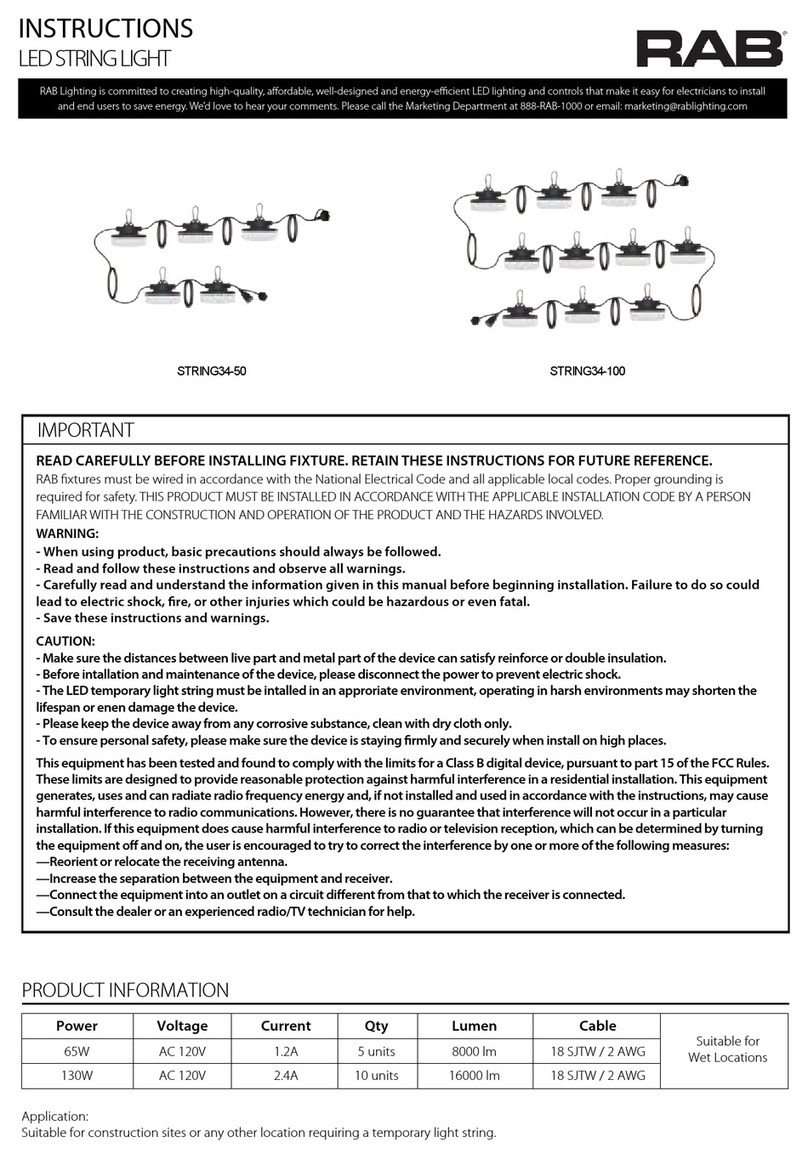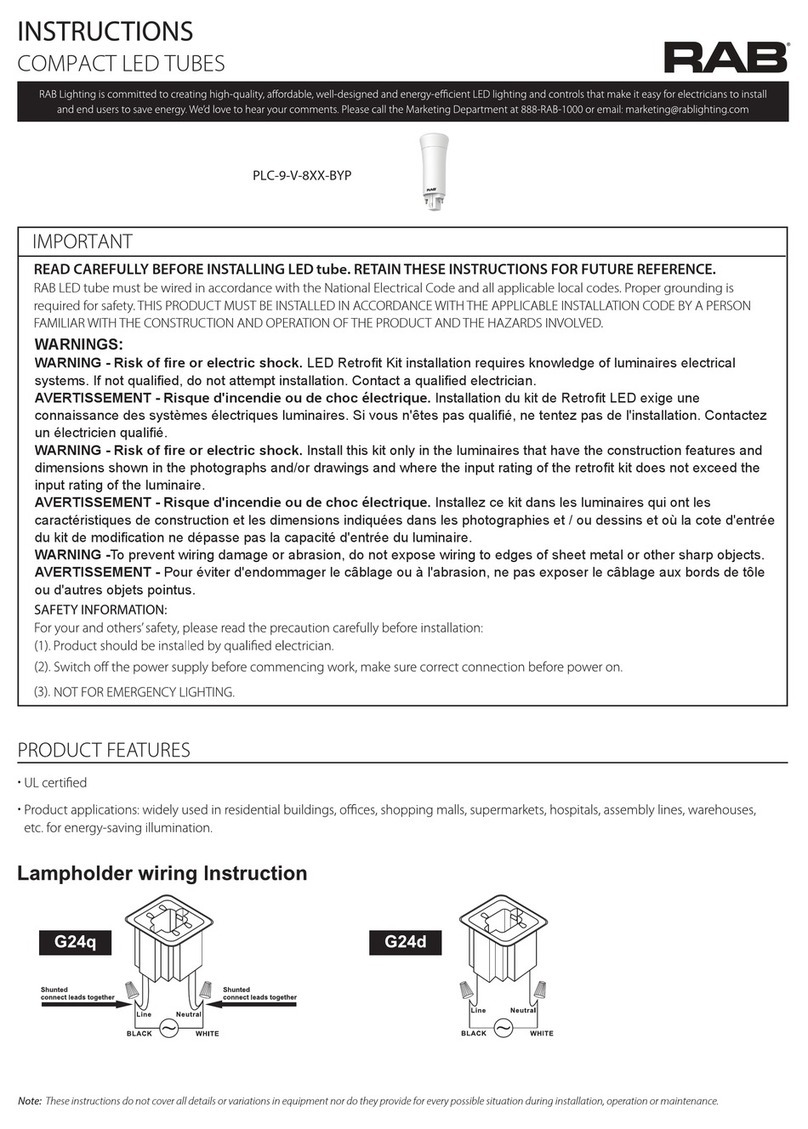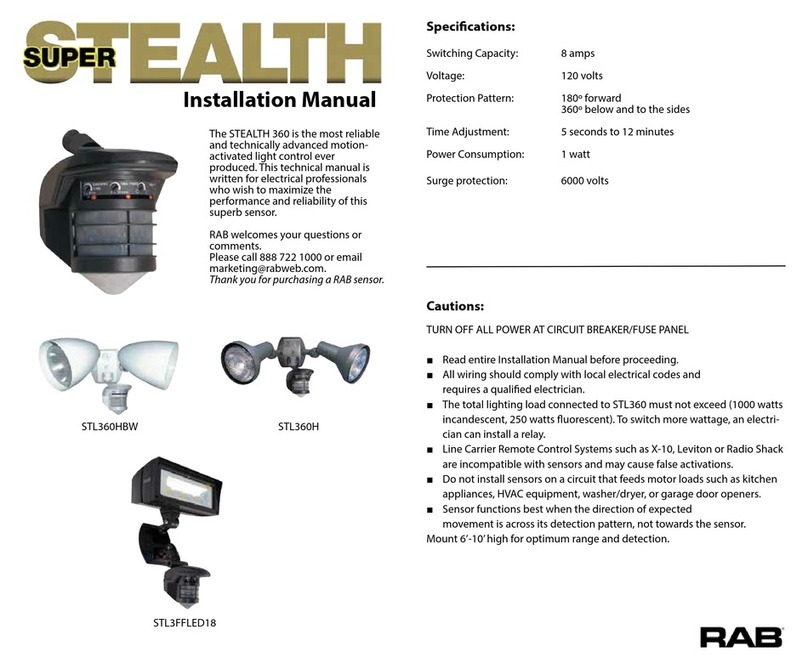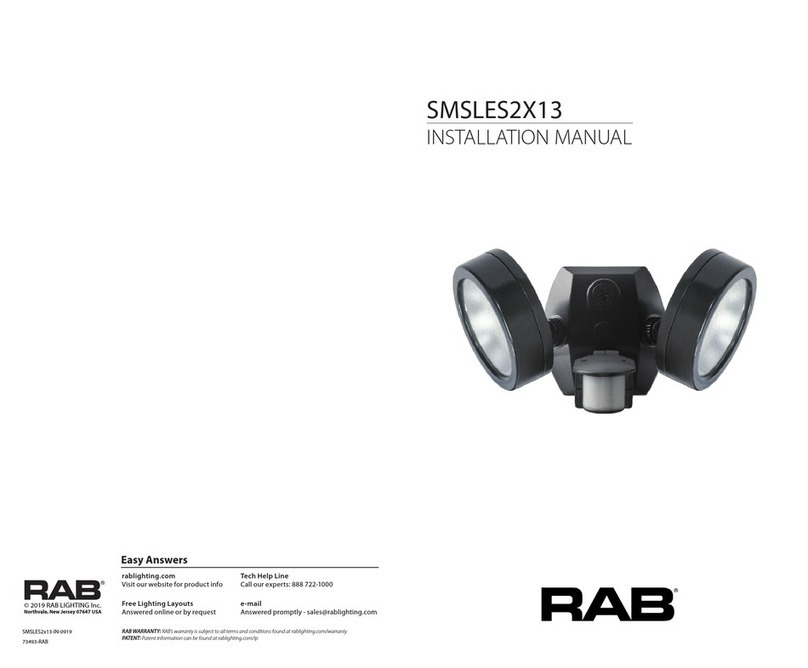
INSTRUCTIONS
STL360H/L, STL360HB/L INSTALLATION
RAB Lighting is committed to creating high-quality, affordable, well-designed and energy-efficient LED lighting and controls that make it easy for electricians to install
and
end
users
to
save
energy
.
W
e’
d
love
to
hear
your
comments.
Please
call
the
Marketing
Depar
tment
at
888-RAB-1000
or
email:
[email protected]7
2. Make sure that the sensor is not in Evening Timer Mode. Turn
power OFF for 10 seconds. (Refer to Step #1).
3. Make sure sensor is not aimed at or mounted over something
that would move or change temperature such as waving
branches, water, air conditioners, windows or heating vents even
on neighboring property. You can test for infrared sources in
the area by placing a box or bag over the sensor. Put sensor into
test mode. Lights should stay off. Wave your hand inside bag in
front of sensor. Lights should go on and then time out. If sensor
operates properly when covered, check items #4-8.
Problem:
Sensor is triggered by unwanted
movement or heat source.
Solution:
1. Aim sensor away from movement, or
2. Mask lens in the direction of the source
3. Lower sensitivity control setting
4. Make sure sensor and lights are
mounted firmly and do not move even
slightly when touched. If they move,
tighten all screws.
5. Make sure sensor is not mounted on an
unstable object such as a tree or pole that
will move in the wind.
Problem: Movement of tree triggers sensor.
Solution: Mount on stable surface.
6. Was sensor wired hot (with power on etc)? If so, circuitry may have
been damaged.
7. Make sure sensor is not aimed within 20 feet of a road.
Problem: Passing cars activate sensor.
Solution: A 20 foot safety
zone and lower sensitivity are
recommended to avoid activation
from passing cars.
8. Make sure heat from lights is not triggering sensor. Make sure the
sensor is below and as far as possible away from lights.
Lights Turn On and Off Inappropriately
1. Make sure the sensor is installed on its own dedicated circuit,
free of motor loads such as HVAC equipment, kitchen appliances
or garage door openers.
2. It is not recommended to wire sensors in parallel. More than
one sensor wired together makes them difficult to troubleshoot.
Disconnect multiple sensors and test separately.
3. Keep all people completely out of the detection pattern to make
sure the sensor is not detecting them.
4. Make sure sensor is located below and as far as possible from its
lights. Heat from the lights may trigger the sensor.
Solution: Move sensor below and away from the lights.
5. Make sure lights are not reflecting back into sensor. Check
for white or reflective surfaces
close to the sensor.
Solution: Aim sensor away from
reflective objects, or move the objects
and lower sensitivity.
6. Make sure sensor is not aimed within 20 feet of a road or
sidewalk. Passing cars will activate sensor.
Solution: A 20 foot safety zone and reduced sensitivity are
recommended to avoid activation from passing cars.
7. Heavy rain, snow or high winds may activate the sensor
occasionally. Reduce sensitivity control slightly until problem
stops.
8. Moths can be attracted to the lights and fly close to the sensor
causing triggering. Reducing the sensitivity may help.
9. Check Solutions #3, 4, 5, 6, 7 and 8 under “Lights Do Not Turn
Off”, beginning on page 6.
Lights Do Not Turn On
1. Check that lamps and fixtures work. Compare wiring to the
wiring diagram in this manual. Check that the power is on.
2. If installing during daylight, LED will go into automatic
mode after 30 sec warm up period and will not work during
daylight if the photocell is turned to the night only position
(moon symbol).
If you require a test mode, turn time setting to 5 seconds and
turn the power off at least 10 seconds and back on again.
WRONGOK!
TECHNICAL TIPS (cont ’d)
